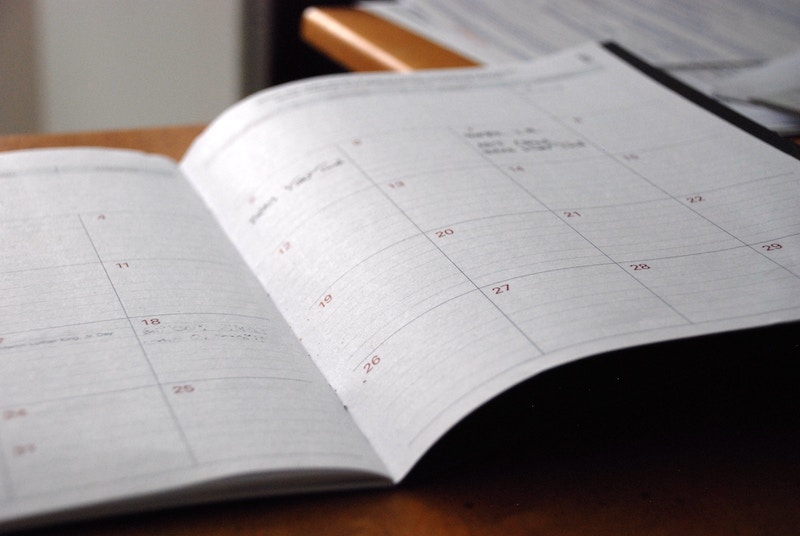There are so many words like davon, damit… starting with “da-” in German. Thus, it is a complex matter but in this post I’m going to explain their general use.
Präpositionalpronomen (aka Präpositionaladverb)
The most common use of words starting with “da-” is pronominal. Consequently, they act as pronouns that refer to something mentioned before together with a preposition (hence the name “prepositional pronouns”).
Examples
(1) Wir haben gestern darüber gesprochen. (We talked about this yesterday)
(2) Hast du ihm davon erzählt? (Did you tell him about this?)
(3) Damit lernen wir Deutsch. (We are learning German with this)
In order to understand the exact meaning of a “da-word”, we need to follow these steps:
- Look for the verb: (1) sprechen, (2) erzählen (3) lernen.
- Identify the preposition: (1) über, (2) von, (3) mit (if the preposition starts with a vowel, we have to put an -r- in the middle: da-r-über).
- Combine them: (1) sprechen über, (2) erzählen von, (3) lernen mit.
- In most cases, the resulting combination is a verb with a fixed preposition: (1) sprechen über (+ Akkusativ) = talk about, (2) erzählen von (+ Dativ) = tell (you can look them up in this table).
- If the verb is not in the table (so maybe it’s not a verb with a fixed preposition), then it’s simply a preposition that makes sense with the verb: (3) Ich lerne mit einem Buch (I study with a book).
- da(r)- means always “this” (referring to something mentioned in the preceding sentence or question. The curious thing in German is that the word order is reverse (da+für = *”this for” → for this). We never say literally “for this” → *”für das” in German, we always say dafür.
Präpositionalpronomen with Wechselpräpositionen
Do you remember the 9 two-way prepositions? They are the ones that can take either accusative (when expressing locomotion: Wohin?) or dative (when expressing position: Wo?).
Here they are: über, auf, unter, vor, hinter, neben, zwischen, in, an.
Very often we use a prepositional pronoun with them. In this case, da(r)– refers always to the place (= object) where something is put, that has been mentioned in the preceding sentence or question.
Examples
– Sitzen die zwei Frauen auf der Schaukel? (Are the two women sitting on the swing?)
– Ja, sie sitzen darauf (slang: drauf) und reden. (Yes, they are sitting on it and talking)
– Steht das Auto hinter dem Haus? (Is the car behind the house?)
– Nein, es steht davor. (No, it is in front of it)
I know, in many languages it’s not necessary to use a pronoun for the place/object mentioned. You just say “there” or “encima” (spanish: above).
However in German we have to be more specific. You have to distinguish between:
- a position: da
- a targeted motion/movement: dahin
Examples
– Soll ich die Blumen auf den Tisch stellen? (Shall I put the flowers on the table?)
– Ja, bitte stell sie dahin. (Yes, please put them there.)
Note: When you put something on/in/under/at a place, you are moving it to that place.
Other Uses and Meanings
Apart from the more frequent meanings explained above, there are some other special words that look like prepositional pronouns but they are not pronouns. They are adverbs or conjunctions and have a completely different use and meaning.
Here are some of the most important ones:
- darum is an adverb meaning “that’s why / thus / so (answering to the question: why?)”.
- danach is a temporal adverb meaning “then / thereafter / afterwards / later”.
- damit is a conjunction meaning “so (that) (answering to the question: to what end?)”.
- dabei has many different meanings. You can read them in this specific post about dabei.
- daher can mean “from there” or “thus / so / hence”.
- dahin is a local adverb meaning “(to) there, to the mentioned place”. It always expresses a targeted motion/movement.
Examples
(1) Wir haben Hunger, darum gehen wir etwas essen. (We are hungry, that’s why / so we are going to eat something.)
(2) Erst duschte er, danach ging er zur Arbeit. (First he took a shower, then he went to work.)
(3) Ich spreche langsam, damit du mich besser verstehst. (I speak slowly, so (that) you can understand me better.)
(5) – Ich gehe zum Kino, kommst du mit? (I’m going to the cinema, do you want to come with?)
– Nein, danke, ich komme gerade daher! (No, thanks, I’m coming just from there!)
(5) Sie wohnt schon seit 6 Jahren in Deutschland, daher spricht sie fließend Deutsch. (She has been living in Germany for 6 years now, that’s why she speaks fluently German.)
(6) – Treffen wir uns am Theater? (We meet at the theater?)
– Ja, ich komme dahin.(Yes, I’ll come (to there).)
In this table you can see a summary of all the meanings explained in this post:



